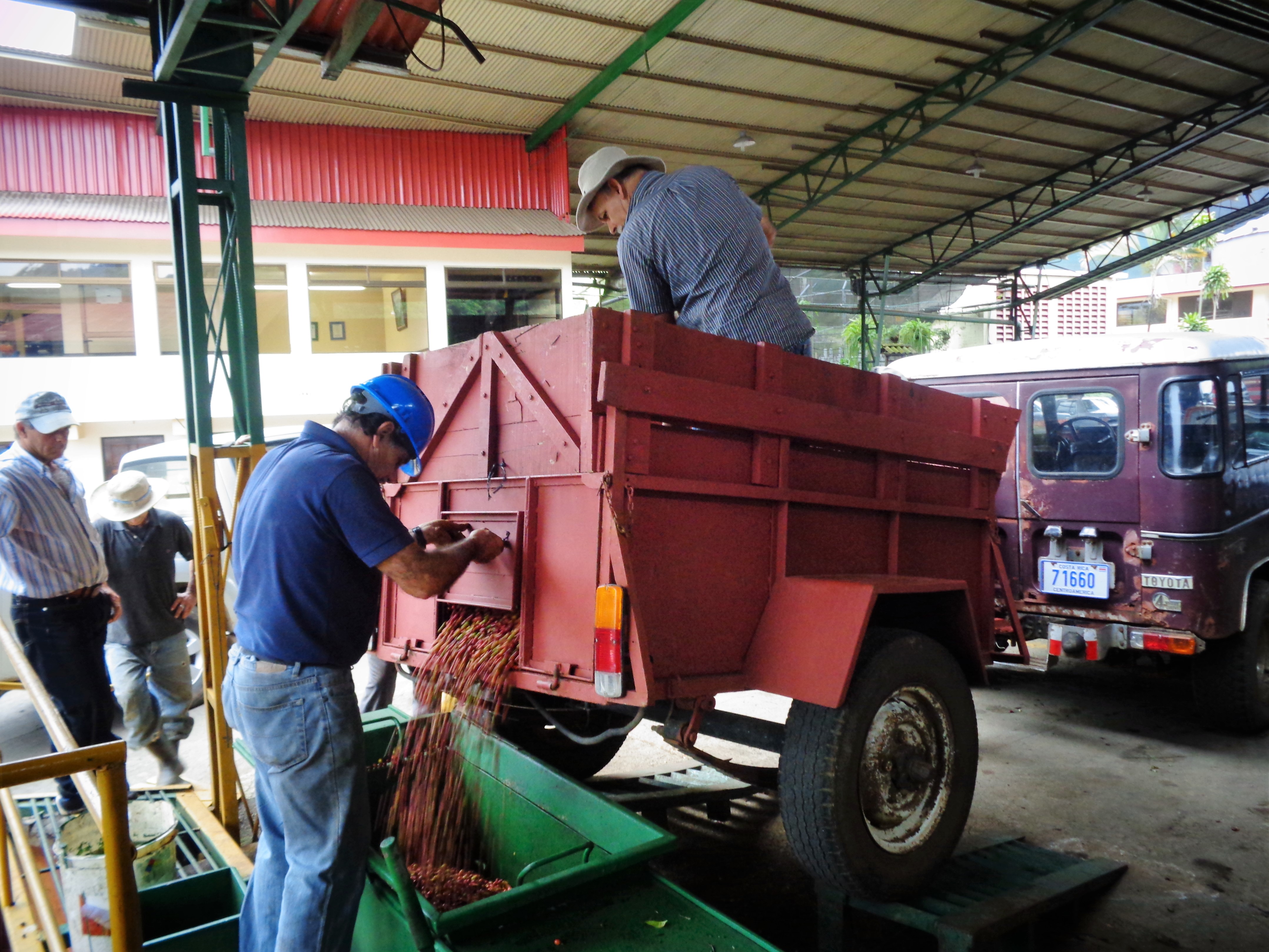Costa Rica El Poeta SHB EP – 28910-2 – SPOT DUPUYHOU
Position Spot
Bags 0
Warehouses Houston
Flavor Profile Lime, cherry, orange, pineapple, juicy
Please Note This coffee landed more than 8 months ago.
Out of stock
About this coffee
Grower
Julia Vega Rodríguez, Olman Cruz Vega, Ricardo Chávez Garita, and Juan Bautista Mejia Rojas
Altitude
1100 masl
Variety
Catuai, Caturra
Soil
Volcanic loam
Region
San Rafael de San Ramón, Alajuela, Costa Rica
Process
Fully washed and dried in the sun and mechanical driers
Harvest
November – February
Certification
Conventional
Coffee Background
Costa Ricans have a way of producing coffee with special intensity and a level of rhythmic precision. It is pure poetry, so it is no surprise that this lot is called ‘El Poeta’!
Processing Detail
It begins and ends with Cafe de Altura de San Ramon, which owns and operates a state-of-the-art mill designed to receive cherries from many small farms and consistently process this well-balanced regional blend. Cherries are placed in a large tank with water to remove the less dense and damaged beans which float. Next, the cherries are depulped and passed through a demucilager that mechanically strips the mucilage from the beans.
All of this is done with recycled water. The washed beans move down from the wet mill through a long, elevated conveyor belt into a machine that uses forced air to shed any remaining water. The coffee then passes through a series of dryers to gently reduce the moisture to 11 percent. This happens in a matter of just over 72 hours (about 3 days), which seems fast until you stop to consider that not a minute is wasted in the process. Then, the coffee is rested for at least a month in silos. After resting, it is milled for export with another equally impressive series of machines dedicated to dehulling and sorting green beans by weight and color. With every detail of the post-harvest operation covered, producers can turn their full attention to farm management practices with a special emphasis on sustainable practices.




